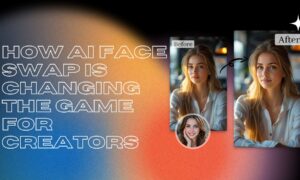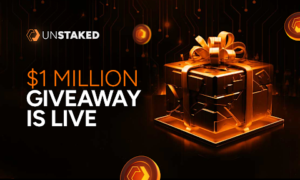Introduction
Business competition is brutal nowadays, and capturing and maintaining user attention is more challenging than ever. “Pioneering User Engagement Through Gamified Solutions” explores how incorporating game-like elements into various platforms can significantly enhance user experience and interaction.
Gamification uses points, badges, leaderboards, and challenges to make mundane tasks more engaging and enjoyable. This innovative approach not only boosts user participation but also drives loyalty and motivation. By blending entertainment with functionality, businesses can create more compelling and interactive experiences for their audience.
This article delves into the benefits of gamified solutions, practical applications, and real-world examples of successful implementations, highlighting how this strategy can transform user engagement across different industries. Whether you’re looking to increase customer retention, enhance learning experiences, or simply make your platform more fun, gamification offers a powerful tool to achieve these goals.
Importance of Gamification for User Engagement
It has been observed that Gamified campaigns experience a 100%-150% increase in user engagement compared to traditional marketing approaches. Gamification can boost browsing time on websites by up to 30%. Gamifying a website boosts comments by 13%, social sharing by 22%, and content discovery by 68%.
Here is why gamification is important:
Increased Motivation and Participation
Gamification taps into users’ innate desire for achievement, competition, and recognition. By incorporating elements like points, badges, and leaderboards, users feel motivated to participate more actively, complete tasks, and strive for higher achievements.
Enhanced User Experience
Gamified elements make interactions more fun and engaging. This can transform mundane tasks into enjoyable activities, keeping users interested and coming back for more. A better user experience leads to higher satisfaction and loyalty.
Improved Learning and Retention
In educational and training contexts, gamification can make learning more interactive and effective. It encourages active participation, immediate feedback, and a sense of accomplishment, which enhances knowledge retention and skill development.
Fostering Community and Collaboration
Leaderboards, team challenges, and social sharing features in gamification can create a sense of community and encourage collaboration. Users are more likely to engage when they feel part of a group with shared goals.
Data-Driven Insights
Gamification allows businesses to gather valuable data on user behaviors, preferences, and engagement patterns. This information can be used to refine and personalize user experiences, leading to even higher levels of engagement.
Nudge’s Gamification feature
Nudge is one of the top platforms that offers an extensive range of Gamification & Rewards features. With us, you can put engagement into auto-pilot by gamifying user journeys and rewarding users based on their actions. Here are all of our gamification features:
- Loyalty Program – Implement a scoring system to reward users on completion of tasks & connect it to a weekly or monthly leaderboard along with badges that can be unlocked based on user activity.
- Challenges – Trigger event-based challenges for users to complete core activities on the platform.
- Streaks – Encourage users to maintain a streak to perform a recurring activity along with a roadmap and reward them constantly.
- Gamified Referrals – Integrate gamified referrals to acquire new users- reward referrers based on invites and the activities performed by their friends.
- Quizzes & Polls – Unlock valuable insights and engage your audience through an interactive set of questions using quizzes and polls.
- Rewards – Incentivize users with rewards like scratch cards, coupons, and coins to drive repeat purchases and retention.
- Game Zone – Increase average use time and help users stay engaged by integrating games like Spin The Wheel, 8 Ball Pool, Carrom, and more.
Top Gamified Solutions for User Engagement
Here are some of the top gamified solutions for better user engagement:
1. Loyalty Programs
- Points and Rewards
Loyalty programs are one of the most prevalent forms of gamification. By offering points for purchases, referrals, and other interactions, businesses can motivate users to engage more frequently. For example, Starbucks Rewards allows customers to earn stars for every purchase, which can be redeemed for free drinks and food items. This system not only incentivizes repeat purchases but also enhances customer loyalty.
- Tiered Membership
Introducing different membership levels, such as Bronze, Silver, Gold, and Platinum, can further gamify loyalty programs. Each tier offers increasingly valuable rewards and benefits, encouraging users to strive for higher levels. Sephora’s Beauty Insider program is a prime example, where users can unlock exclusive perks and early access to products as they move up the ranks.
2. Educational Platforms
- Interactive Quizzes
Educational platforms can use gamification to make learning more engaging and effective. Interactive quizzes with instant feedback, badges for completing modules, and leaderboards to track progress are popular gamified elements. Duolingo, a language learning app, uses these techniques to keep users motivated and on track with their language studies.
- Progress Tracking
Visual progress bars and streaks can significantly boost user engagement by providing a sense of achievement and motivation. For instance, Khan Academy tracks students’ progress through lessons and offers badges and points for completed exercises, making learning a more rewarding experience.
3. Fitness Apps
- Challenges and Competitions
Fitness apps like Strava and Fitbit use gamification to encourage physical activity. Users can participate in challenges, compete with friends, and earn badges for completing workouts. These elements make exercising more fun and socially engaging, promoting a healthier lifestyle.
- Goal Setting and Rewards
Setting personal goals and receiving rewards for achieving them is another effective gamified solution. Nike Run Club allows users to set running goals and earn virtual trophies for reaching milestones, providing motivation to stay active and committed to their fitness journey.
4. Employee Engagement
- Recognition Programs
Gamification can also be applied in the workplace to enhance employee engagement and productivity. Recognition programs that offer badges, points, and leaderboards for achieving goals and demonstrating desired behaviors can foster a positive and motivated work environment. For example, companies like Salesforce use gamified platforms to reward employees for completing training and achieving sales targets.
- Training and Development
Gamified training programs can make professional development more engaging and effective. By incorporating elements like quizzes, interactive simulations, and progress tracking, employees are more likely to stay engaged and retain information. Platforms like Coursera for Business offer gamified learning experiences to help employees upskill in a fun and interactive way.
5. E-commerce Platforms
- Gamified Shopping Experiences
E-commerce platforms can use gamification to enhance the shopping experience and drive sales. Interactive games, spin-to-win wheels, and scavenger hunts are popular methods to engage users. For example, fashion retailer ASOS has used gamified elements like spin-to-win discounts and flash sales to increase user engagement and sales.
- Personalized Recommendations
Leveraging gamification to provide personalized product recommendations can significantly enhance user experience. Amazon’s use of “customers who bought this also bought” and “frequently bought together” features creates a sense of discovery and engagement, encouraging users to explore and purchase more products.
6. Social Media Platforms
- User-Generated Content
Social media platforms can use gamification to encourage user-generated content and increase engagement. Instagram’s use of hashtags, challenges, and story features gamifies content creation, making it more fun and interactive for users. This not only boosts engagement but also helps to build a vibrant and active community.
- Leaderboards and Badges
Incorporating leaderboards and badges for activities like posting, sharing, and commenting can further enhance user engagement. LinkedIn, for example, offers badges for completing profile sections and endorsing skills, motivating users to be more active on the platform.
7. Customer Support
- Self-Service Solutions
Gamified self-service solutions can improve the customer support experience by making it more interactive and rewarding. Chatbots that offer points and badges for successfully resolving issues or finding information can encourage users to use self-service options. Zendesk’s Answer Bot, which uses gamified elements to guide users through support articles, is an excellent example of this approach.
- Feedback and Surveys
Incorporating gamified elements into feedback and survey processes can increase participation rates and provide valuable insights. Offering points, badges, or entry into a prize draw for completing surveys can motivate users to share their feedback. For instance, Google Opinion Rewards provides users with credits for completing short surveys, making the feedback process more engaging.
8. Healthcare Platforms
- Patient Engagement
Healthcare platforms can use gamification to improve patient engagement and adherence to treatment plans. Apps like MySugr, which helps users manage diabetes, offer points, challenges, and badges for logging blood sugar levels and following treatment plans. This gamified approach makes managing health conditions more engaging and rewarding.
- Health Education
Gamified health education tools can make learning about health and wellness more interactive and effective. Apps like Headspace use gamified elements to teach users about mindfulness and meditation, offering badges and progress tracking to keep users motivated and engaged.
9. Banking and Finance
- Financial Management
Gamification can make financial management more engaging and accessible. Apps like Mint and YNAB (You Need A Budget) use gamified elements such as goal setting, progress tracking, and rewards for reaching financial milestones to help users manage their finances effectively.
- Savings Challenges
Encouraging users to save money through gamified challenges can boost financial wellness. Apps like Qapital offer savings challenges and goals, allowing users to set and achieve financial objectives in a fun and interactive way.
10. Travel and Tourism
- Travel Planning
Travel platforms can use gamification to enhance the planning experience. Apps like TripAdvisor offer badges for writing reviews, sharing photos, and participating in forums, motivating users to contribute to the community and plan their trips more interactively.
- Rewards Programs
Frequent flyer programs and hotel loyalty schemes often incorporate gamified elements to encourage repeat bookings and brand loyalty. For example, Marriott Bonvoy offers points for stays, flights, and activities, which can be redeemed for various rewards, creating a more engaging travel experience.
Conclusion
Gamification is a powerful tool for enhancing user engagement across various industries. Businesses can make interactions more enjoyable, motivating, and rewarding by incorporating game-like elements such as points, badges, leaderboards, and challenges. Whether it’s through loyalty programs, educational platforms, fitness apps, or e-commerce solutions, gamification offers a dynamic way to captivate and retain users.
As technology continues to evolve, the potential for gamified solutions to drive user engagement will only grow, offering exciting opportunities for businesses to connect with their audience in innovative and impactful ways. Book a demo with Nudge to get the best gamification features.




































